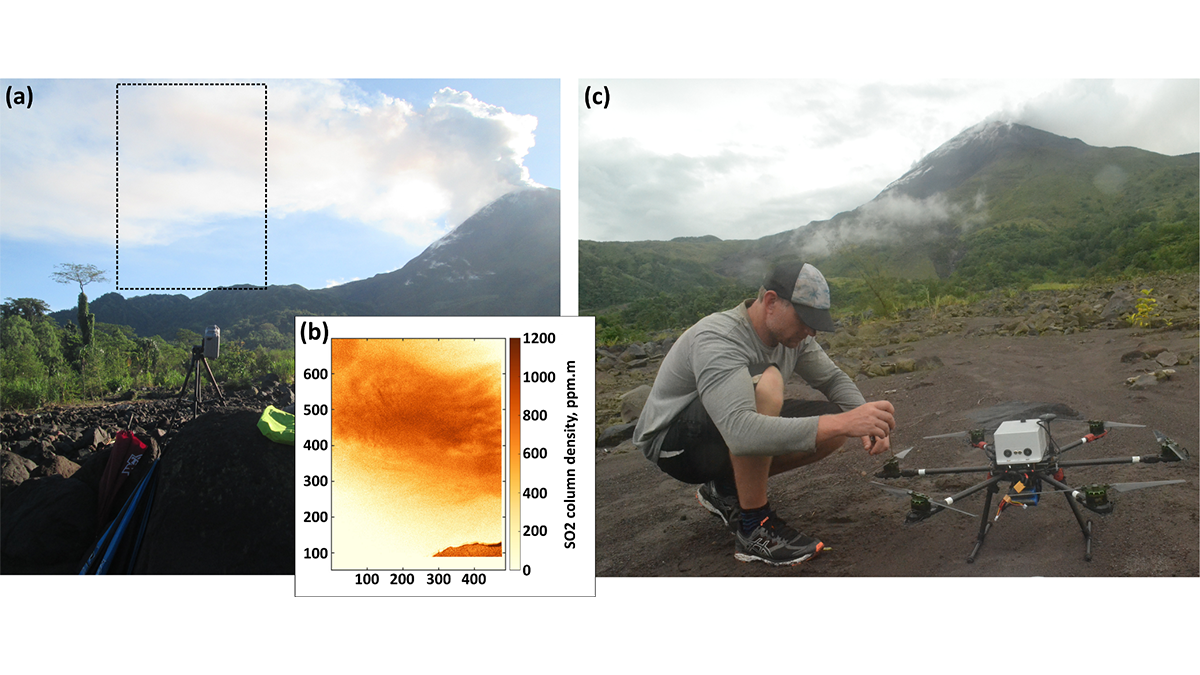Editors’ Highlights are summaries of recent papers by AGU’s journal editors.
Source: Geochemistry, Geophysics, Geosystems
Volcanoes are highly dynamic, time-variable systems that pose major local and regional hazards as well as long-term effects on climate. Many remote volcanoes are poorly monitored and acquiring time-series data on their gas emissions has been a challenge for existing resources and technologies.
As a complement to traditional ground-based and satellite-based methods, McCormick Kilbride et al. [2023] demonstrate a pioneering use of unmanned aerial vehicles (drones) to monitor volcanic gas emissions at Bagana Volcano in Papua New Guinea. Its remote location and variable activity have posed a challenge for quantifying its emissions and forecasting eruption hazard. Although ground-based and satellite instruments have been able to monitor SO2, they are not able to determine CO2 fluxes. The drone, on the other hand, by flying directly through the gas plume and determining the local CO2/SO2 ratio, provides the additional constraint needed to quantify net CO2 emission from the volcano. This approach is important for monitoring of inaccessible volcanoes and for constraining the global volcanic CO2 flux.
Citation: McCormick Kilbride, B. T., Nicholson, E. J., Wood, K. T., Wilkes, T. C., Schipper, C. I., Mulina, K., et al. (2023). Temporal variability in gas emissions at Bagana volcano revealed by aerial, ground, and satellite observations. Geochemistry, Geophysics, Geosystems, 24, e2022GC010786. https://doi.org/10.1029/2022GC010786
—Paul Asimow, Editor, G-Cubed

